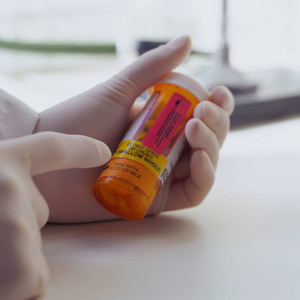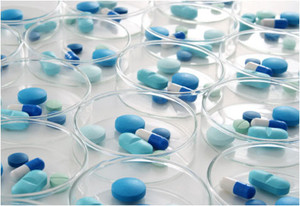A 2-day public meeting was held by the FDA on 2–3 October 2010 at Silver Spring, Maryland, USA, in order to obtain input on specific issues and challenges associated with the implementation of a biosimilars pathway as part of the BPCI Act. The discussions at the meeting focussed on the challenges associated with characterisation of such complex molecules and what clinical trials would be appropriate [1].
FDA hearing on biosimilars: focus on characterisation and clinical trials
Home/Guidelines
|
Posted 08/07/2011
 0
Post your comment
0
Post your comment

The Biologics Price Competition and Innovation (BPCI) Act of 2009 is part of the healthcare reform legislation, which was signed into law on 23 March 2010 by President Barack Obama. The BPCI Act establishes an abbreviated approval pathway for biological products that are demonstrated to be “highly similar” (biosimilar) to, or “interchangeable” with, an FDA-licensed biological product.
Challenges of characterisation
It seems there are still concerns from the FDA over whether current analytical tools are capable of analysing post-translational modifications, three-dimensional structure and protein aggregation. Although these fears were allayed by Biopharmaceutical Business Director of Waters, Dr Jeffrey Mazzeo, who said that mass spectrometry and nuclear magnetic resonance can probe post-translational modifications and three-dimensional structure, whereas mass spectrometry and light scattering can examine protein aggregation.
Head of Global Development of Biopharmaceuticals at Sandoz, Dr Mark McCamish, took the stance that, although the current technology is not perfect, the tools regulators already rely on to assess whether manufacturing changes affect the safety, potency or purity of an approved biological are also adequate for examining biosimilarity.
Pharmaceutical scientist at Utrecht University, Professor Huub Schellekens, who did not attend the hearing, however, commented that ‘we still have examples of unexpected things happening with protein drugs that have been well characterised’. He quoted the example of Hospira’s biosimilar epoetin alpha (Retacrit) which, although pre-approval physiochemical, in vivo, and animal testing showed biosimilarity, had lower potency in clinical trials. According to Professor Schellekens, current analytical techniques have the following shortcomings: inability to assess immunogenicity and potency, underpinning the necessity for clinical trials.
Clinical trials
There was much debate, however, over the scope of clinical trials for biosimilars. A key sticking point was whether non-inferiority trials (in which a biosimilar fails if it is worse than the reference biological) or equivalence trials (in which it may also not be better) will be required. Generics companies believe equivalence trials, due to their extra costs, will deter biosimilars without providing extra benefit to patients [1].
Although in Europe at least one equivalence trial is currently required, Chair of the EMA’s Biosimilar Working Party, Dr Christian Schneider, informed the hearing that ‘arguments that non‑inferiority designs might be acceptable are on the table.’
Discussions also focussed on how large these clinical trials would need to be and how many would be necessary. Whether it would be feasible to run crossover trials demonstrating interchangeability was also a point of contention. These types of trials could enable pharmacists to freely switch originator biologicals for their respective biosimilars.
Another heated debate covered the subject of extrapolation of clinical data to other indications. Here firms, such as generics manufacturer Watsons, expressed the opinion that a single clinical trial should support approval for all indications with common mechanisms. However, originator companies argued that extrapolation of data should be avoided, using the multiple mode of action of monoclonal antibodies as a reason for this.
EMA biosimilars pathway
In Europe, the regulatory frameworks for biosimilars are already established, with both general and product specific guidelines put in place by the EMA, covering human insulin, somatropin, human growth hormone, erythropoietin, interferon-alpha, low molecular weight heparin and monoclonal antibody. The agency is also currently working on draft guidelines for a number of other product class specific guidelines, including interferon-beta and follicle stimulation hormone and is planning to initiate a review of its broadest guidelines during 2011 [2].
Attendees at the FDA hearing agreed on one thing—their experience with the EMA’s abbreviated pathway for biosimilars has been positive.
The FDA, which accepted written and electronic comments on the implementation of the pathway for biosimilars until the end of 2010, has, up to July 2011, still not published any draft guidance.
Related article
FDA holds public hearing on biosimilars pathway
References
1. Mullard A. Hearing shines spotlight on biosimilar controversies. Nat Rev Drug Discov. 2010;9(12):905-6.
2. GaBI Online - Generics and Biosimilars Initiative. EMA and FDA to collaborate on biosimilars. [www.gabionline.net]. Mol, Belgium: Pro Pharma Communications International; [cited 2011 July 5]. Available from: www.gabionline.net/Biosimilars/News/EMA-and-FDA-to-collaborate-on-biosimilars
Policies & Legislation
ANVISA tackles 24-month backlog in biologicals post-registration petitions
US EO: delivering Most-Favored-Nation Prescription Drug Pricing to American patients
Most viewed articles
The best selling biotechnology drugs of 2008: the next biosimilars targets
Global biosimilars guideline development – EGA’s perspective
New guidance for biologicals in Pakistan and Hong Kong’s independent drug regulatory authority

Home/Guidelines Posted 20/10/2025
Canada poised to remove requirement for Phase III trials for biosimilars

Home/Guidelines Posted 22/07/2025
The best selling biotechnology drugs of 2008: the next biosimilars targets








Post your comment